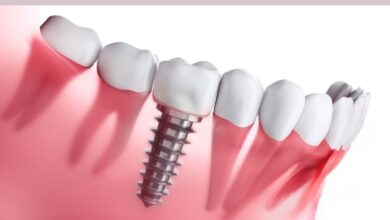
A non-surgical facelift involves procedures that rejuvenate your face without surgery. These methods, like dermal fillers or laser treatments, offer a youthful look without incisions or recovery time.
They’re usually preferred to traditional facelifts for their simplicity and reduced risks. Non-surgical options provide natural results and avoid the potential complications associated with surgery.
With minimal discomfort and quick recovery, they’re a popular choice for those seeking a refreshed appearance without the commitment of surgery. So, if you’re looking for a less invasive route to a younger look, visiting a non surgical facelift clinic in Singapore might be the perfect choice for you!
Can a Mini Facelift go wrong?
To begin, non-surgical facelift treatments are generally safe. But, like any medical procedure, they come with some degree of risk.
So yes, a mini facelift can also go wrong. Here are nine risks you will want to know about before consenting to a non surgical facelift in Singapore;
- Bruising and Swelling: After undergoing a non-surgical facelift treatment, it’s common to experience mild bruising and swelling. These are typically temporary. That means that the bruising should diminish within a few days. However, if they persist or worsen significantly, it’s advisable to consult your aesthetic doctor.
- Infection: Infections are quite rare when it comes to non surgical facelifts. Nonetheless, there is always a minimal risk associated with any procedure involving injections or the use of medical devices. To mitigate this risk, strict adherence to sterile techniques is absolutely crucial. This ensures that the procedure is conducted in a clean and controlled environment to minimize the chance of infection.
- Allergic Reactions: Certain non-surgical facelift procedures involve the use of dermal fillers. Now, allergic reactions are also quite rare. However, they can occur in some cases. It’s best to have a detailed discussion with your doctor about any allergies or sensitivities you may have before undergoing the procedure. This allows them to choose the most suitable products for your unique situation.
- Asymmetry: Achieving perfect symmetry in facial procedures can be challenging. This is the case even for the most skilled practitioners. That said, there’s a slight risk of experiencing asymmetry after a non-surgical facelift. However, experienced practitioners take precise measures in the placement of fillers or threads to minimize this risk and achieve the most balanced and natural-looking results possible.
- Nerve Damage: While exceedingly rare, there is a remote possibility of nerve damage during the procedure. This could occur if a nerve is accidentally affected. It’s crucial to note that this is an extremely uncommon occurrence. In the rare event that it does happen, it could lead to temporary or, in extremely rare cases, permanent facial weakness. Rest assured, experienced providers take every precaution to prevent such incidents.
- Filling Irregularities: On rare occasions, dermal fillers may lead to irregularities in the skin, resulting in lumps or unevenness. This is a situation that skilled practitioners are adept at handling. They can usually address these issues effectively with corrective treatments, restoring a smooth and natural appearance.
- Overfilling or Underfilling: The correct placement and dosage of fillers are paramount in achieving natural-looking results. Incorrect placement or excessive use of fillers can result in unnatural-looking outcomes. This underscores the critical importance of choosing a provider who is not only experienced but also highly qualified. A skilled practitioner will have the expertise to assess and administer the appropriate amount of filler for optimal results.
- Skin Discoloration: Following non-surgical facelift treatments, some individuals may experience temporary skin discoloration. While this is usually a passing phase, it may, in some cases, require additional corrective procedures. This possibility should be discussed with your healthcare provider during the consultation phase.
- Loss of Sensation: In very rare instances, individuals may experience temporary numbness. They may also experience altered sensation in the treated area. It’s important to note that this is an unusual side effect. Also, it usually resolves over time. However, any such occurrences should be promptly reported to your aesthetic doctor. It is best that they’re carefully evaluated and appropriate care taken where needed.
How can I Minimize the Risks of Complications from Non Surgical Facelift?
There is a lot that can be done to minimize the risks of complications from your non surgical face lift in Singapore. Incidentally, for the best results, ensuring a safe and successful experience is paramount. Here are five tips to minimize risks and complications from a non surgical facelift;
- Select a Board-Certified Practitioner: Opt for a board-certified plastic surgeon or aesthetic doctor. Their specialized training and certification attest to their expertise in non-surgical facelift procedures. This credential offers assurance of skill and knowledge, enhancing the likelihood of a smooth and effective treatment.
- Verify Candidacy for the Chosen Treatment: Not all non-surgical facelift treatments are suitable for everyone. Prior to the procedure, have a thorough consultation with your chosen practitioner. They will assess your skin type, medical history, and specific concerns to determine the most appropriate treatment. This personalized approach minimizes the risk of adverse reactions or unsatisfactory results.
- Adhere to Pre-Treatment Guidelines: Follow your practitioner’s pre-treatment instructions meticulously. These may include avoiding certain medications. You may also be advised to abstain from alcohol to minimize risks of bleeding, or discontinue the use of specific skincare products. Adhering to these guidelines optimizes your body’s readiness for the procedure. It also reduces the likelihood of complications.
- Communicate Openly and Honestly: Transparency with your aesthetic doctor or plastic surgeon is also key. Discuss any allergies, sensitivities, or previous adverse reactions to cosmetic treatments. Additionally, inform them of any ongoing medical conditions or medications you’re taking. This information allows them to tailor the treatment to your unique circumstances, minimizing potential risks.
- Comply with Post-Treatment Care: After the procedure, diligently follow the post-treatment instructions. This may include avoiding sun exposure, or refraining from strenuous activities. It may also involve using recommended skincare products. These guidelines are designed to promote proper healing and enhance the longevity of your results. That said, ignoring them could lead to complications and suboptimal outcomes.
The Bottom Line
Non-surgical facelift procedures offer a less invasive alternative to traditional surgical methods. However, it is still important to be aware of potential risks and complications.
Choosing a highly skilled and experienced provider, having an open communication with them about allergies or concerns, and adherence to proper aftercare instructions are all key elements in ensuring a safe and successful non-surgical facelift experience. To schedule an appointment with a board-certified doctor for consultation on non-surgical face lift in Singapore, call or visit us at;
Dr Lee Mun Heng – Eye Bag Removal | Ultherapy Facelift Singapore
391B Orchard Road 08-05A3 Tower B,
Ngee Ann City,
Singapore 238874
https://drleemunheng.com/
+65 9155 8869



